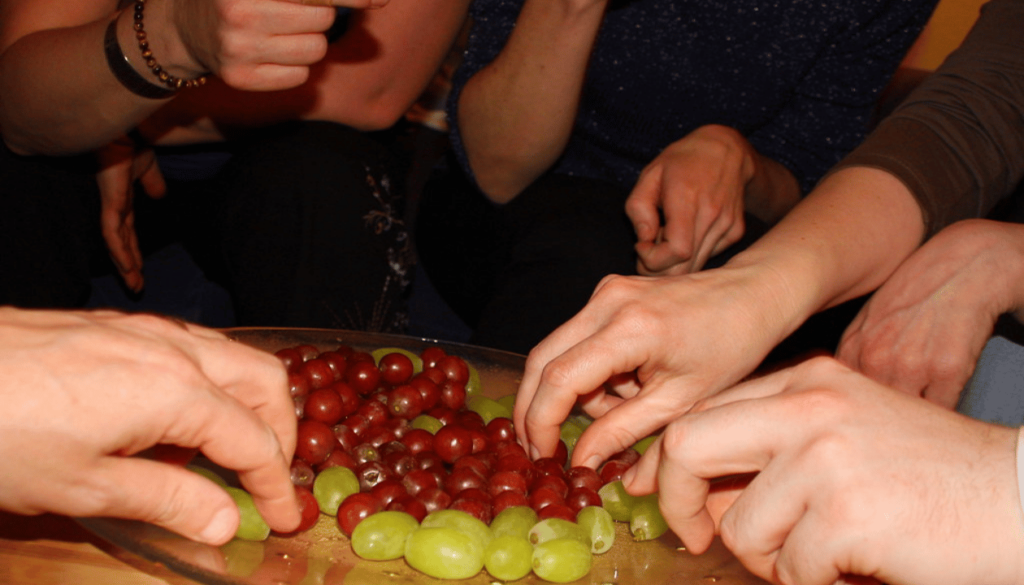

New Year Eve celebration, or Nochevieja as it is known in Spain, has always been a momentous occasion, marked by family gatherings, lively parties, and long-held traditions. Celebrated on 31 December, also known as Old Year’s Day, this night signifies the end of the past year with dazzling lights and midnight fireworks.
From the streets of Madrid’s Puerta del Sol to intimate gatherings in homes, the night is filled with excitement as people prepare to welcome the new year.
However, the way Spaniards celebrate has transformed significantly in recent years, particularly due to the COVID-19 pandemic, which gave rise to a new digital dimension to these celebrations.
With many families now separated by borders for work, study, or other reasons, virtual and digital platforms have become central to keeping connections alive, making New Year’s Eve a truly global and technologically connected celebration.
The Impact of the Pandemic on Celebrations
The COVID-19 pandemic disrupted virtually every aspect of daily life, including how people across the globe celebrate key events.
New Year’s Eve, a time typically synonymous with crowded plazas, New Year’s eve fireworks, and large family gatherings, became a quiet affair in many homes.
As countries implemented lockdowns and social distancing measures, gathering in person with loved ones was not an option.
In Spain, this change was particularly significant as New Year’s Eve traditions, such as eating 12 grapes at the stroke of midnight, typically involved large groups of friends and family enjoying the holiday season together.
The Rise of Virtual Gatherings
Out of necessity, many people turned to technology. Zoom, Skype, WhatsApp, and other digital platforms became the lifeline for families separated by distance.
Suddenly, virtual New Year’s Eve events replaced traditional in-person gatherings, offering family fun in a digital format.
While the pandemic restrictions have since eased, the legacy of digital celebrations remains, especially for families who now find themselves living across different countries.
This shift has also encouraged the incorporation of live bands and special events into virtual celebrations, ensuring the spirit of New Year’s Eve continues to bring joy to the whole family.
Virtual New Year’s Eve Parties in Spain
Virtual gatherings have become a way for families to celebrate together, no matter the distance.
In Spain, where family bonds run deep, the shift to virtual parties was initially a matter of maintaining connections despite restrictions during the holiday events.
However, this trend has evolved into a long-term solution for many families who live abroad or in different parts of Spain.
These virtual gatherings often reflect the joy of a New Year’s celebration, bringing family-friendly events into homes and ensuring bonds remain strong.
Celebrating Across Time Zones
One unique challenge for Spanish families with members living abroad is managing time zones. Whether in Latin America, the United States, or across Europe, Spanish families have found creative ways to sync their New Year’s Eve celebrations.
Much like Christmas in Spain and Latin America, these celebrations emphasize family connections and shared traditions.
Some organize staggered countdowns to ring in the new year, allowing each member to celebrate their local time while keeping the spirit of togetherness alive.
In some cases, families hold multiple countdowns, celebrating once for the member living in Spain and again for the one living in a different time zone, maintaining the joy of the evening across borders.
Virtual Events in Major Cities
As virtual celebrations became more common, cities across Spain started organizing digital events to bring people together from various locations in the country and the world.
In Madrid, Barcelona, and Valencia, local councils hosted virtual New Year’s Eve events featuring live music, virtual firework displays, and even midnight champagne toasts.
Participants could join via live streams to enjoy the midnight ball drop or celebrate in front of colorful lights in a central square.
These events have allowed expatriates and those unable to travel back to Spain to ring in New Year’s Day and share in traditional celebrations from wherever they are.
Technology and Traditions: How Spaniards Celebrate Virtually
Despite the shift to virtual gatherings, many cherished Spanish New Year’s Eve traditions remain. The iconic act of eating 12 grapes at midnight, known as las doce uvas de la suerte, is one such tradition that families have preserved through digital platforms.
The 12 Grapes Tradition
In Spain, it is customary to eat 12 grapes as the clock strikes midnight on New Year’s Eve, one for each chime. Traditionally, this ritual is shared among family and friends at the dinner table or in crowded squares like Madrid’s Puerta del Sol, often decorated with party favors for the occasion.
Now, with family members joining from afar, this tradition has gone digital. Families gather on Zoom, WhatsApp, or Skype, with each member preparing their 12 grapes and syncing their clocks to share this symbolic moment in real-time.
In some cases, families even organize grape-eating challenges or make a game of who can successfully eat all 12 grapes before the last chime, creating a sense of annual entertainment.
Innovative Apps for Grape-Eating
With the increasing reliance on technology, developers have created apps specifically designed to enhance the Christmas Eve experience.

Some apps offer reminders and digital chimes to sync the grape-eating ritual perfectly, while others provide countdown timers or even allow users to engage in interactive games or challenges centered around the tradition.
These apps, along with live streaming tools, help keep the cultural essence of Nochevieja intact, even when families are far apart.
For many, these innovations have turned this cultural event into the perfect place for creativity and connection, ensuring the tradition thrives in all ages and settings.
Innovative Digital Platforms for Spanish Celebrations
As the digital world continues to expand, so do the ways in which Spaniards celebrate New Year’s Eve. Beyond simple video calls, innovative platforms and apps are now offering immersive experiences that bring people closer to the sights and sounds of Spain, no matter where they are in the world.
Interactive Apps for New Year’s Eve
Several apps have emerged that provide interactive experiences for Spanish New Year’s Eve celebrations.
For example, there are apps that allow users to virtually join crowds in places like Puerta del Sol, where they can watch live streams of the midnight countdown or even join in digitally on the iconic Spanish square’s celebrations.
These platforms often include live performances, virtual concerts, and even dance parties, allowing people to celebrate as if they were physically present in Spain’s most famous New Year’s Eve spots.
Live Streaming Cultural Experiences
Many digital platforms have also embraced live streaming as a way to share Spanish culture with a global audience.
Some platforms stream traditional New Year’s Eve performances, such as flamenco shows or live music concerts, allowing families to enjoy these cultural moments together, even if they are thousands of miles apart.
Other platforms offer cooking classes or demonstrations where participants can learn to prepare traditional New Year’s Eve dishes, adding a cultural twist to their celebrations.
Augmented Reality (AR) and Virtual Reality (VR)
Looking ahead, there is great potential for AR and VR technologies to play an even bigger role in New Year’s Eve celebrations.
Imagine being able to experience the midnight countdown in Puerta del Sol through a VR headset or taking a virtual tour of Spanish landmarks during a daytime celebration.
These technologies, while in their early days, promise to make future New Year’s Eve celebrations more immersive and exciting, rivaling iconic global events like Times Square.
How Families Stay Connected Virtually
For families separated by distance, staying connected virtually has become an essential part of their New Year’s Eve celebrations. While video calls have become the norm, many families have found creative ways to maintain their traditions and make the night special.
Social Media and Live Updates
Social media platforms like Instagram, Facebook, and TikTok have become integral to how families share their New Year’s Eve experiences.
Throughout the night, families post updates, photos, and videos, allowing loved ones to experience the celebration in real-time.
Whether it’s sharing a picture of the uvas de la suerte or posting a video of the midnight toast, social media allows families to stay connected and feel a part of each other’s celebrations, even when physically apart.
Virtual Meals and Post-Midnight Games
In addition to the midnight countdown, many families now make video calls part of their entire New Year’s Eve experience.
They sit down for their traditional meal with a laptop or tablet at the table, allowing them to dine “together” with loved ones who are far away.
After the midnight toast and grape-eating, some families also engage in post-midnight games or virtual quizzes, keeping the celebration going even after the clock strikes 12.
The Future of New Year’s Eve Celebrations in Spain
As we move forward, it’s clear that the way Spaniards celebrate New Year’s Eve has been permanently shaped by technology. Even as restrictions lift and people can gather in person again, many families continue to integrate virtual elements into their celebrations, particularly when they have loved ones living abroad.

Hybrid Celebrations
The future may see more hybrid celebrations, where some family members gather in person while others join virtually.
This blended approach allows families to experience the best of both worlds, preserving the intimacy of in-person gatherings while maintaining connections with those who cannot be there physically.
Technology Shaping Traditions
The role of technology in shaping Spanish New Year’s Eve traditions cannot be understated. As more advanced technologies like augmented reality and virtual reality become mainstream, the potential for even more immersive and interactive celebrations grows.
From virtual fireworks displays to live-streamed performances, the future of New Year’s Eve in Spain is undoubtedly digital.
A New Era of Celebrations
As we look to the future, it’s clear that the digital transformation of New Year’s Eve celebrations in Spain is just the beginning.
Technology has undoubtedly bridged the gap for families separated by distance, allowing traditions to be shared virtually.
However, while virtual gatherings have become a popular solution, there is something irreplaceable about experiencing Spanish culture firsthand.
That’s where the Spanish Homestay Immersion Program (SHIP) comes in.

While digital platforms offer convenience, true immersion in the language, traditions, and festivities of Spain happens in person. The Spanish Homestay Immersion Program (SHIP) experience allows you to live and study Spanish directly in the home of a native teacher, blending cultural learning with everyday life.
Imagine not only celebrating New Year’s Eve virtually but being part of the tradition as it happens—eating the 12 grapes with your host family, joining local festivities, and practicing your Spanish in real-life settings.
As we embrace the future of virtual celebrations, nothing can quite compare to experiencing Spanish culture and language in person. SHIP offers you the unique opportunity to do just that, giving you the chance to live the traditions, learn the language, and truly become part of the Spanish way of life.
FAQs
What is the tradition for New Year’s Eve?
New Year’s Eve traditions vary worldwide, but one of the most famous involves gathering with family and friends to celebrate the year’s event. In Spain, for instance, people eat 12 grapes at midnight to bring good luck. In many cities, festivities include parades, fireworks, and countdowns in central locations like city hall or iconic landmarks.
How to make New Year’s Eve special?
You can make New Year’s Eve special by organizing a memorable celebration. Host a dinner with an open bar, plan an outing to watch a parade, or gather tickets for a premium event in your city. Adding personal touches like writing resolutions or sharing memories of the past year can make the evening truly unforgettable.
What happens in Chicago on New Year’s Eve?
Chicago is known for its vibrant New Year’s Eve celebrations. The city hosts events with open bars, live music, and fireworks displays. Many gather at Navy Pier or attend premium parties downtown. Tickets for these events often include perks like a premium open bar and midnight champagne toasts.
What do the French call New Year’s Eve?
In France, New Year’s Eve is called “La Saint-Sylvestre.” It is celebrated with elegant dinners, often featuring premium champagne, and lively events. Many Parisians enjoy parades or attend glamorous parties, making it a festive occasion to ring in the new year.
What does Austin do for New Year’s?
Austin celebrates New Year’s Eve with a mix of live music, fireworks, and premium events. The city often hosts parties with open bars, concerts, and festive parades. Tickets for exclusive events in Austin sell quickly, as they offer a unique way to enjoy the city’s vibrant culture on this special night.
Where is the best place to spend New Year’s Eve?
The best place to spend New Year’s Eve depends on what you’re looking for. Cities like New York, Paris, and Sydney are famous for their large-scale fireworks and parades. Smaller venues with open bars or intimate gatherings near city halls often provide a cozier way to celebrate.
What is New Year’s a celebration of?
New Year’s is a celebration of the transition from one year to the next. It’s a time to reflect on the past year’s events and embrace the future with hope and resolutions. The celebration often includes parties, fireworks, and special gatherings to welcome the new year with joy.
What is the most famous New Year’s tradition?
The most famous New Year’s tradition worldwide is the midnight countdown, followed by fireworks. In the U.S., the ball drop in Times Square is iconic. Globally, traditions often include gatherings, sharing resolutions, and enjoying entertainment like parades or live music.
What do Catholics do on New Year’s Eve?
Catholics often spend New Year’s Eve in prayer or attend a special Mass to reflect on the blessings of the past year and seek guidance for the year ahead. Some also participate in parades or enjoy family gatherings, blending spirituality with celebration.












